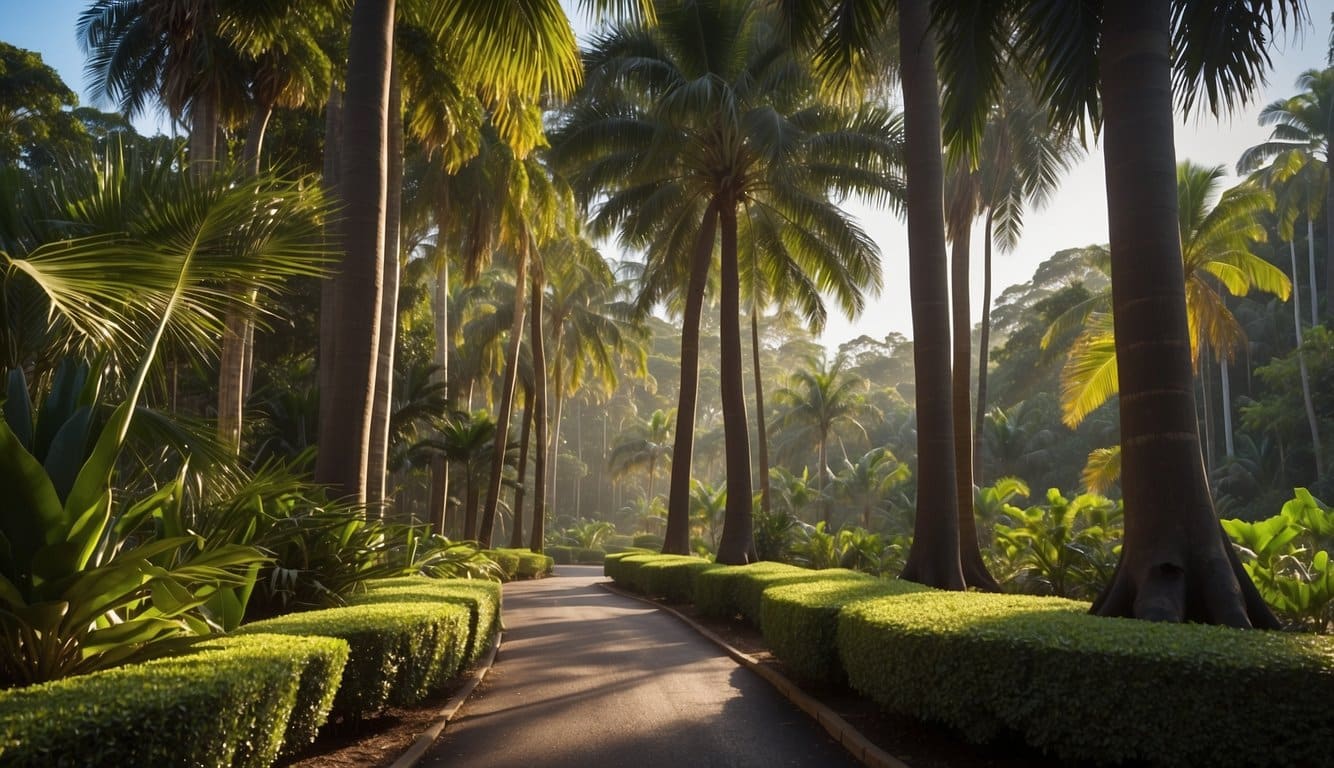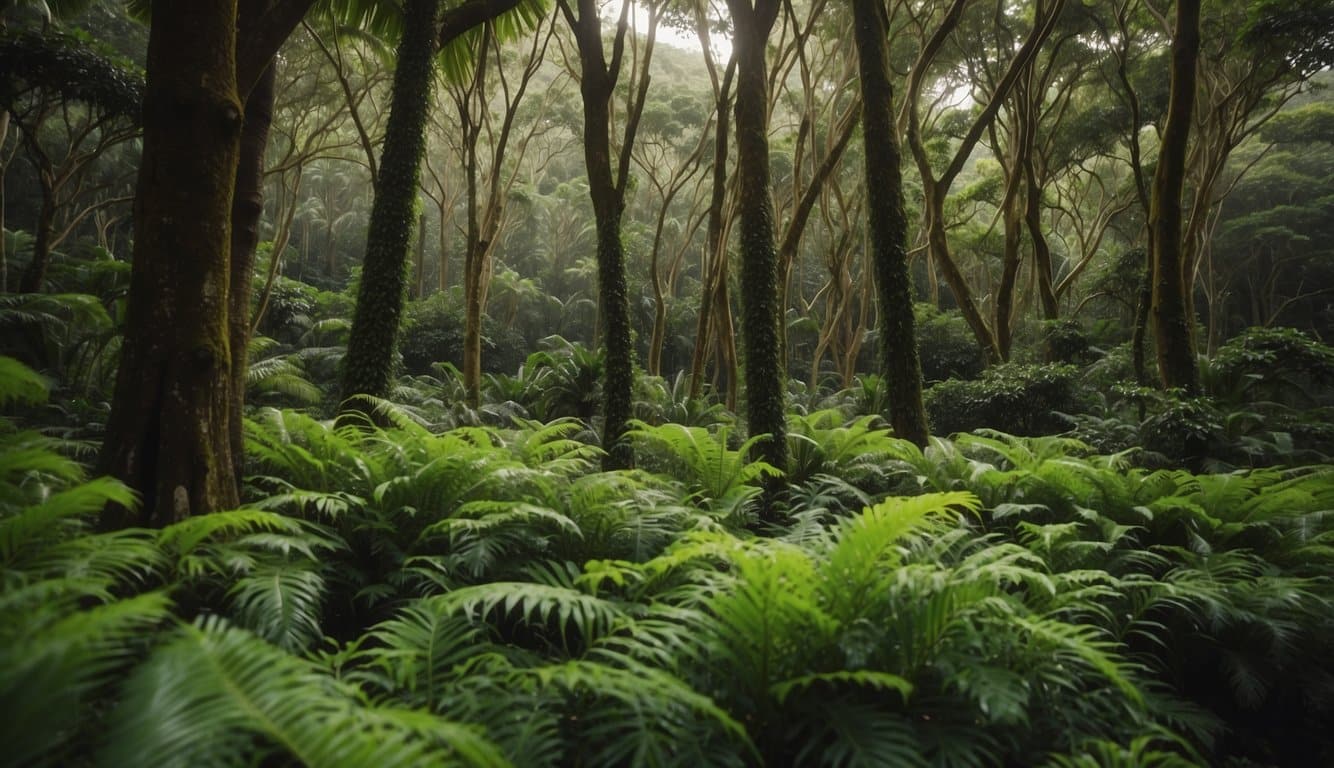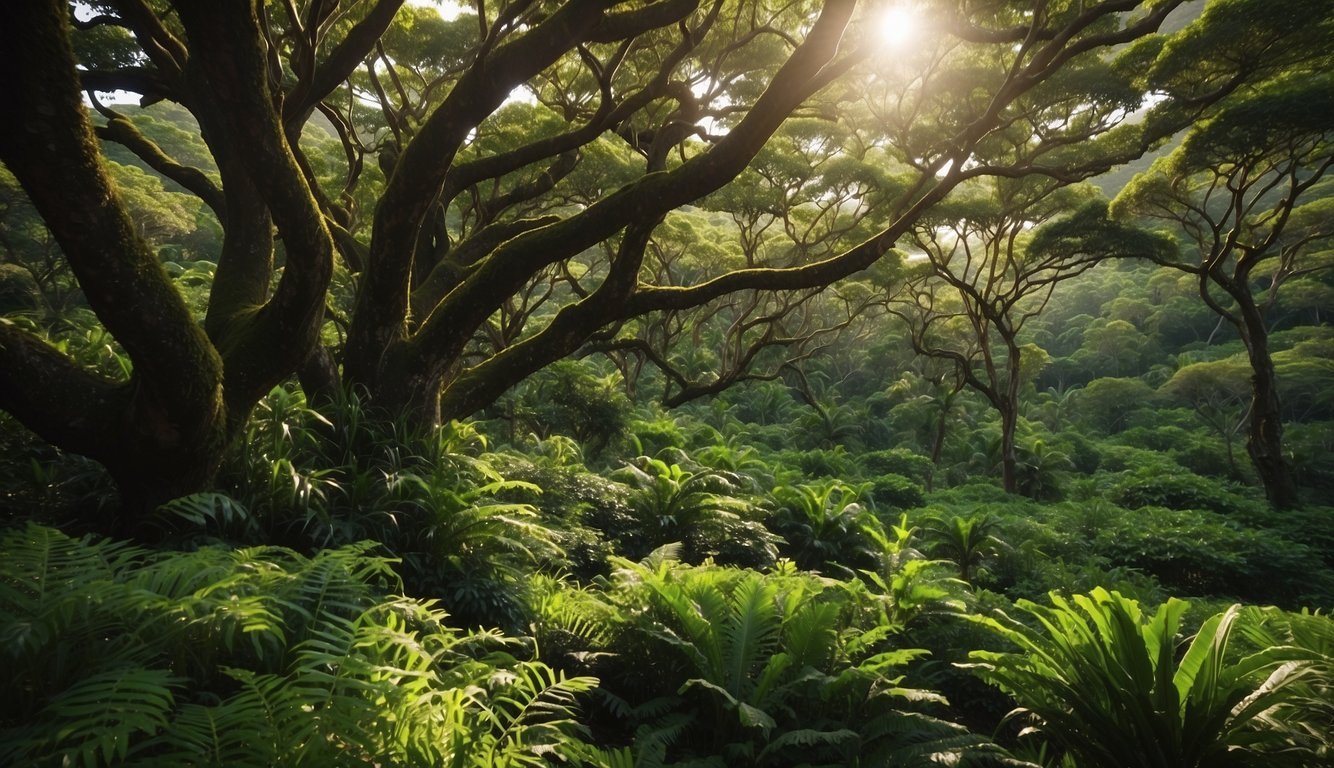Oahu, known as “The Gathering Place,” boasts a rich tapestry of trees that are as diverse as the island’s celebrated cultural mosaic. This verdant display ranges from the resilient native species that have weathered the island’s ecological shifts, to the flourishing introduced varieties, each carrying its own story.
The island’s varied elevations and climates create microclimates that nurture an array of arboreal life, providing a haven for trees such as the ‘ohi’a lehua and the storied koa, which hold significant ecological and cultural roles in Oahu’s environment.
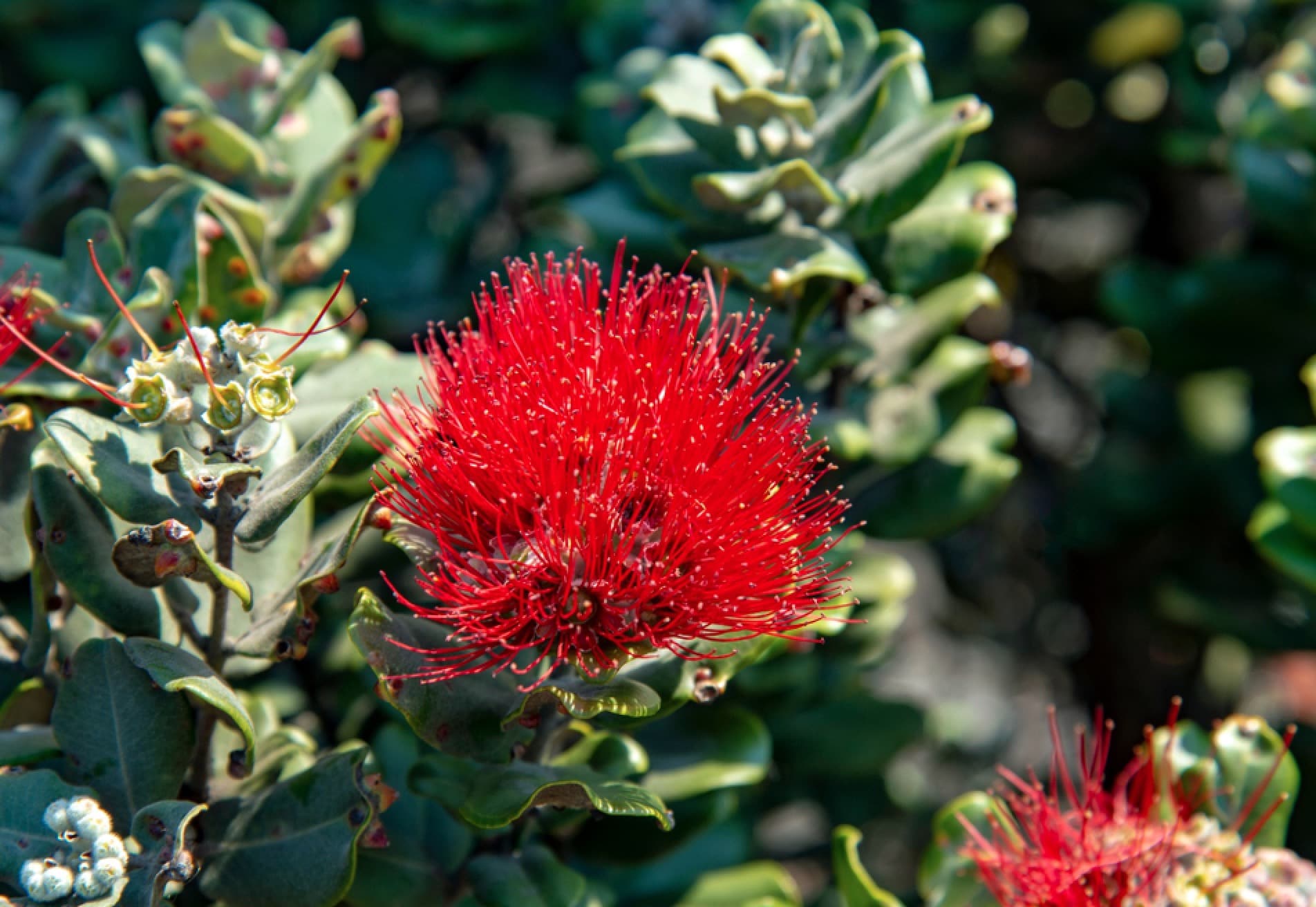
The history of Oahu’s trees is deeply intertwined with the cultural heritage of the island. The Polynesians, who were among the first inhabitants, introduced functional plants like the kukui nut tree, which not only became the state tree but also served as a vital resource for light and ornamentation.
In contemporary times, trees continue to play a pivotal role in Oahu’s ecosystems, serving as crucial habitats for wildlife, stabilizers of soils, and as lungs of the island, converting carbon dioxide into the vital oxygen that supports life here.
Key Takeaways
- Oahu’s diverse tree species reflect the island’s rich cultural and ecological history.
- Historical uses of trees on Oahu highlight their significance in Hawaiian heritage and sustainability.
- Conservation efforts aim to protect Oahu’s unique and essential arboreal environment.
Trees in Oahu Throughout History
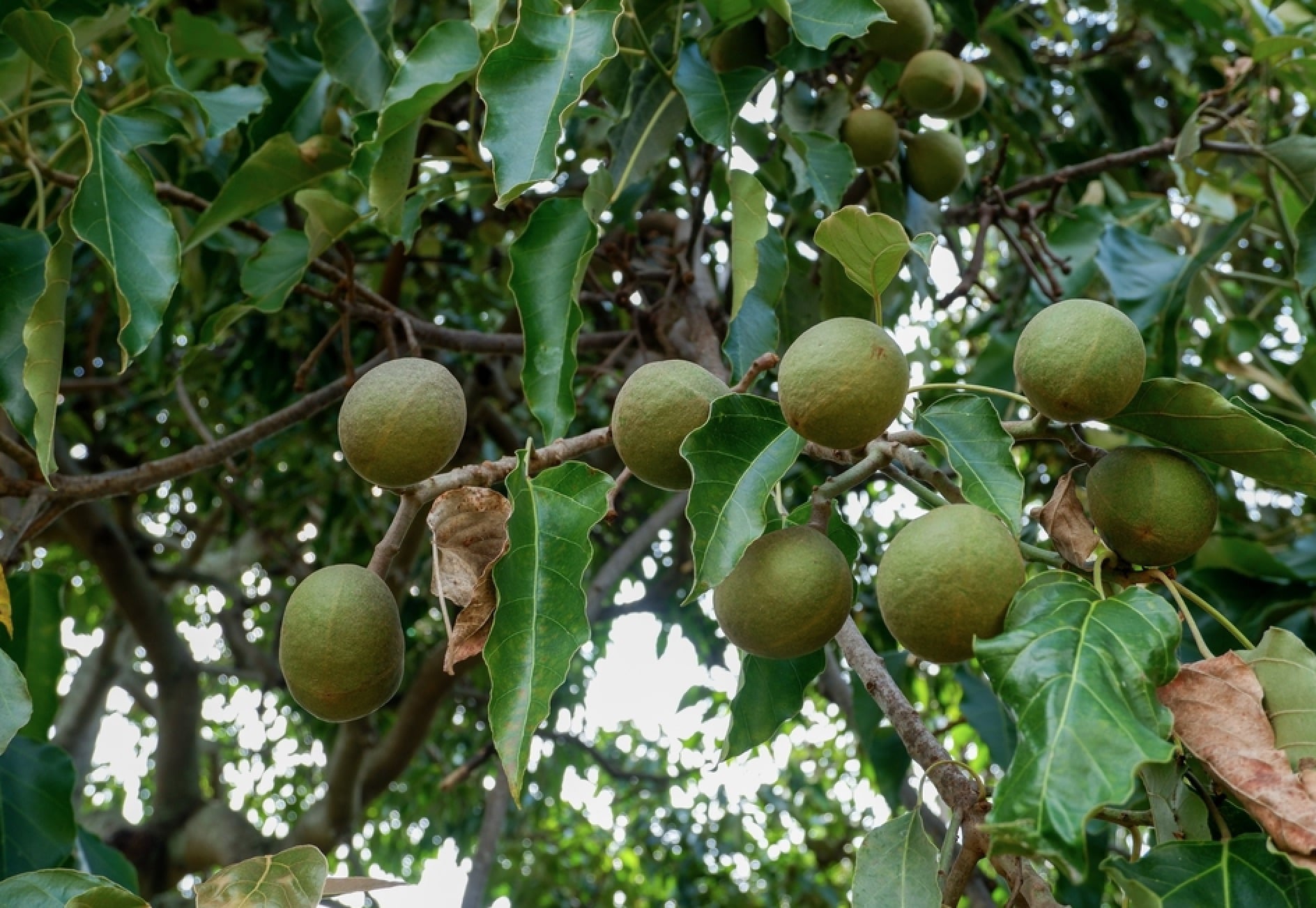
The trees of Oahu offer a profound glimpse into the island’s past, merging ecological significance with cultural heritage and colonial influences.
Indigenous Trees and Their Cultural Importance
The indigenous trees of Oahu are deeply rooted in the traditions and daily lives of the Hawaiian people. For centuries, these species have been integral to the island’s native culture. The Kukui tree (Aleurites moluccanus)[pictured above] is designated as the state tree of Hawaii and was used historically for lighting, ink, and medicine, demonstrating its critical role in traditional Hawaiian society.
Another significant indigenous tree is the ‘Ōhi’a Lehua (Metrosideros polymorph)[first photo in this article], revered in Hawaiian mythology and valued for its wood and beautiful red flowers.
Colonial-Era Introductions and Environmental Impact
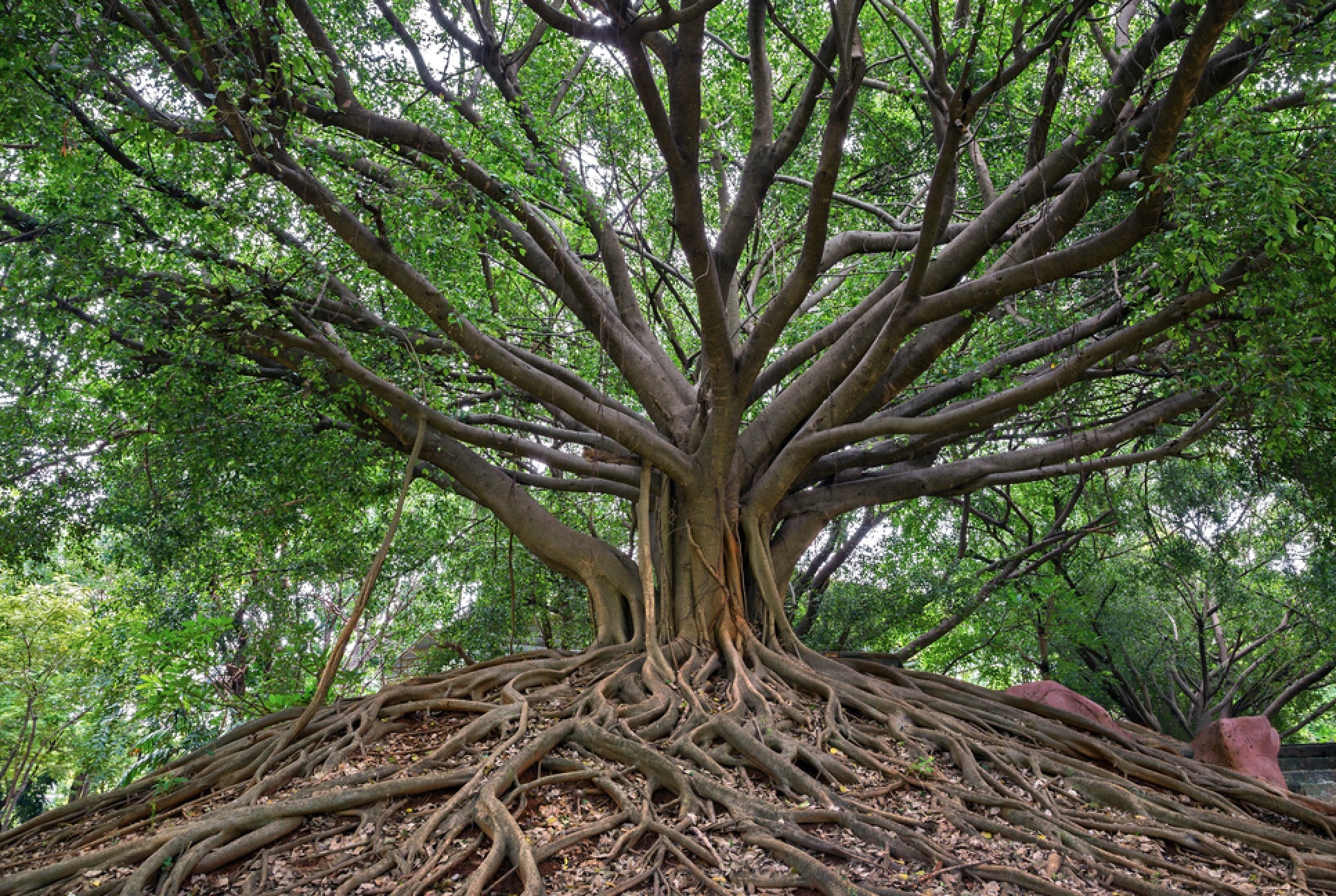
The introduction of non-native trees during the colonial era has left a lasting impact on Oahu’s landscapes. The banyan tree, originally from India, was brought to the island by missionaries and notable figures. These trees, such as the one planted by Sheriff William Owen Smith in Maui in the 1800s, have become prominent features in Oahu. They symbolize the past and stand as living monuments to historical events.
Although these introductions have aesthetic and historical value, some, like the introduction of Ironwood trees (Casuarina equisetifolia), have altered local ecosystems and presented challenges for native species conservation.
Major Tree Species of Oahu
Oahu’s flora presents a diverse tapestry of tree species, ranging from native to invasive, including trees unique to the Hawaiian archipelago.
Native Species
The islands of Hawaii boast a variety of native tree species that have adapted to the unique climatic conditions over millennia. On Oahu, one finds the majestic Koa (Acacia koa), famous for its wide-spreading canopy and cultural significance. Another prominent native is the ‘Ohi’a Lehua (Metrosideros polymorpha), known for its resilience and beautiful red flowers.
- Native Species:
- Koa (Acacia koa)
- ‘Ohi’a Lehua (Metrosideros polymorpha)
Invasive Species
Although they contribute to the green vistas, several species have been introduced to Oahu and have become invasive, often outcompeting native species. The Earpod Tree (Enterolobium cyclocarpum), brought to the island over a century ago, is one such species. It is now commonly seen and continues to spread across the forested areas.
- Invasive Species:
- Earpod Tree (Enterolobium cyclocarpum)
Endemic Species
The term “endemic” refers to species that are found nowhere else in the world but in Hawaii. The Loulou Palm (Pritchardia spp.), for example, is endemic to the Hawaiian Islands and adds a unique feature to Oahu’s landscapes with its remarkable fan-like fronds.
- Endemic Species:
- Loulou Palm (Pritchardia spp.)
Conservation Efforts
In Oahu, the protection and recovery of forests are critical due to their importance in maintaining freshwater resources and supporting biodiversity. Numerous initiatives have taken root, embracing a range of strategies from hands-on restoration to policy development.
Preservation and Restoration Initiatives
Conservation organizations and local groups have committed to the planting and nurturing of native tree species, vital for the ecosystem’s health. Over 44,812 native trees have been planted in an effort to replenish the forests of Hawaii. Targeted removal of invasive species is also a key action, with over 22 tons of invasive plants removed to prevent ecological harm.
Community Engagement and Education
Community awareness and participation are crucial in conservation work. Programs are in place to educate residents and visitors on the importance of Hawaii’s forests and the threats they face, such as the impact of invasive species and the devastating Rapid Ohia Death (ROD) affecting the ʻōhiʻa trees.
The ʻŌhiʻa Challenge represents a collaborative effort, offering a prize to encourage innovative solutions to combat ROD.
Legislation and Policy
The local and federal governments have implemented legislation aimed at protecting Oahu’s forests. Policies have been established not only for land management and restricted access in critical areas but also for funding fencing projects that protect forests from feral animals.
Through partnerships with agencies like the U.S. Department of the Interior’s Office of Native Hawaiian Relations and the National Park Service, comprehensive strategies are enacted to sustain Hawaii’s natural heritage.
Ecological Importance and Benefits
Trees in Oahu play a critical role in supporting the environment through a myriad of ecological services, offering a rich habitat for biodiversity, and aiding climate regulation through carbon sequestration.
Ecosystem Services
Trees provide a suite of ecosystem services that are indispensable. Beyond the aesthetic value, the trees in Oahu enhance the quality of air and water.
For instance, evergreen trees keep the landscape lush throughout the year, contributing to cleaner air and water. Roots stabilize the soil, reducing erosion, while the canopy intercepts rainfall, reducing the runoff that leads to sedimentation in waterways.
- Air purification: Trees absorb harmful gases, releasing oxygen in return.
- Soil stabilization: Tree roots prevent soil erosion.
- Water quality: Forests filter rainwater and help maintain watershed health.
Habitat and Biodiversity
The habitat and biodiversity offered by Oahu’s forests are notable. The integration of trees and shrubs into agricultural systems—agroforestry—provides habitats for wildlife, acting as refuge and food sources for a plethora of species.
Oahu’s diverse tree species create a mosaic of ecosystems, supporting endemic species unique to Hawaii.
- Wildlife refuge: Forests offer habitat for various species.
- Food sources: Trees and shrubs are vital in food chains.
Climate Regulation and Carbon Sequestration
Trees are also pivotal in climate regulation and carbon sequestration. The large-scale planting of native and endemic Legacy Trees on Oahu embodies the commitment to enhance the forest’s carbon capture capacity.
Forests store significant amounts of carbon, both in the trees themselves and within the soil, mitigating the effects of climate change.
- Carbon capture: Trees lock away carbon dioxide from the atmosphere.
- Temperature modulation: Forest canopy helps moderate local temperatures.
Frequently Asked Questions
When it comes to the flora of Oahu, trees are a central topic of interest. Oahu’s trees are diverse and have unique characteristics, making them the subject of many common questions.
What is the most common tree in Oahu?
The most common tree on Oahu is the Koa (Acacia koa). It’s recognized for its importance to the local ecosystem and cultural significance to the Hawaiian people.
What are the giant trees in Oahu called?
The massive trees often seen across Oahu are Banyans (Ficus benghalensis). Their sprawling canopy and aerial roots make them a distinctive and iconic presence on the island.
What kind of trees make up the canopy in Oahu’s forests?
The canopy in Oahu’s forests is composed of a variety of species, including the Ōhiʻa Lehua (Metrosideros polymorpha) and the Koa, both of which are native to the Hawaiian Islands.
How can one identify the different trees found in Oahu?
Identifying different trees on Oahu can be done by examining their leaves, bark, flowers, and growth habits. Field guides specific to Hawaiian flora can provide additional assistance for identification.
Where can I find pictures of Oahu’s indigenous tree species?
Pictures of Oahu’s indigenous tree species can be found in local botanical garden publications, online databases specializing in native Hawaiian flora, and through academic resources like the University of Hawaii’s botany department.
What are the characteristics of the flat top trees on Oahu?
Flat top trees on Oahu, such as the Monkeypod (Samanea saman), are known for their broad, spreading canopies that provide ample shade.
They are often seen in parks and along streets for their aesthetic and functional value.
